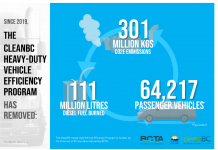Depending on your carrier’s routing procedures, the shortest route may not necessarily be the best route, due to various factors such as weight, and fuel costs. Currently, the big one is fuel cost. All companies negotiate a bulk fuel price that is lower than pump price by a few cents per gallon, but as of today, fuel prices in Canada are running about 50% higher than they are in the US. So a load from Winnipeg to Seattle, for example is roughly 1,000 miles in Canada from Winnipeg to Eastport ID. At 7.5 mpg, that will require 133 gallons of fuel at about $6.00 per gallon. That works out to $800.00 in fuel.
To travel that same distance in the US, will cost $533. Add in the currency exchange rate, and it come out to $705 Canadian, a savings of almost $100.00!
These numbers are calculated under ideal circumstances, which we all know seldom occur. Running across Canada, averaging 7.5 mpg especially with a heavy load in the mountains is next to impossible. Add in the stop and go through small towns with traffic lights, stop signs and the like and you’ll be lucky to average 6 mpg. in Canada. Meanwhile, in the US, a 7.5 mpg average is completely doable. Once on the interstates, there are very few slowdowns, the hills are not as steep, slower traffic is easier to pass, meaning even less slowing and accelerating, which is murderous to your fuel consumption. For this reason, anytime you have a load from Canada to the US, or vice versa, try to cross the border as close to the Canadian customer as possible. You’ll save your company money, which means there’s more money available for a possible pay raise, or if you’re an owner operator, there’s more money in your pocket.






















